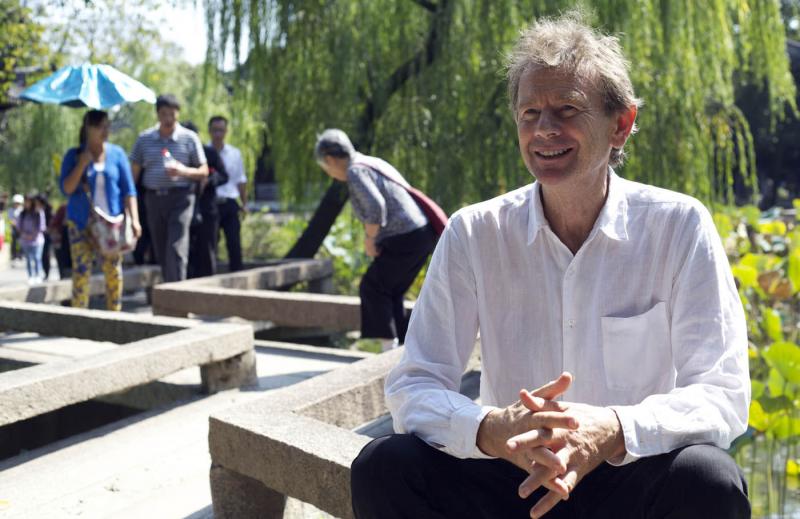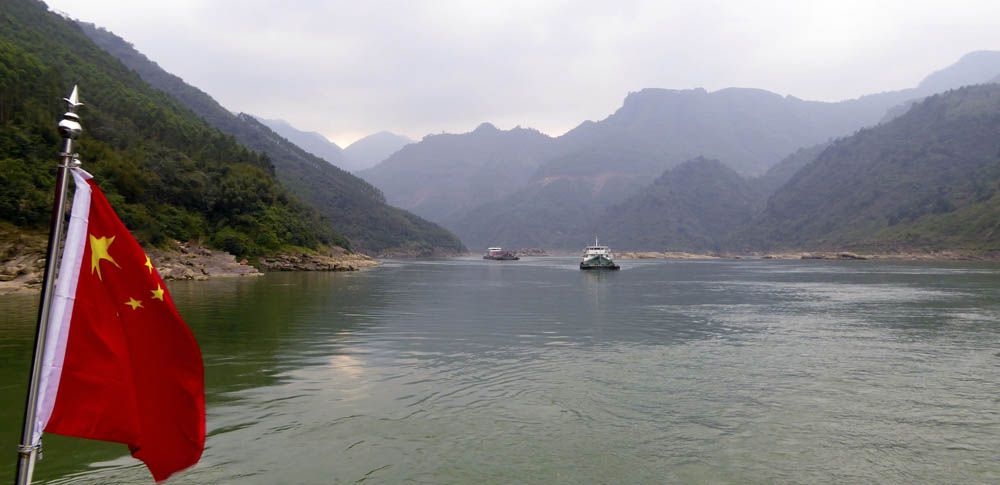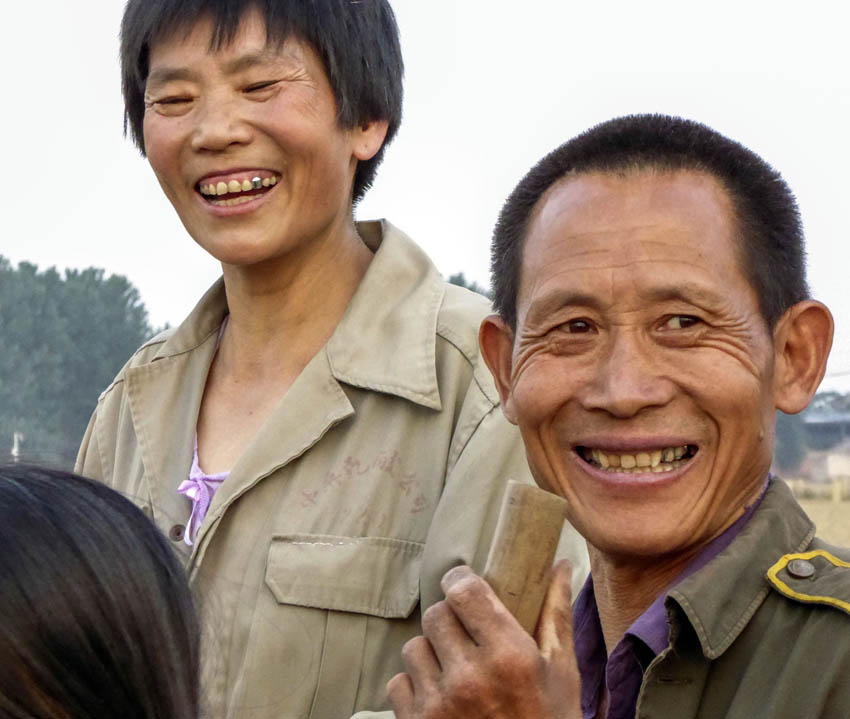The Story of China, BBC Two | reviews, news & interviews
The Story of China, BBC Two
The Story of China, BBC Two
Meet the new China – but how different is it from the old China?

China’s tumultuous recent past attempted to selectively obliterate the history of one of the world’s great and ancient civilisations, with the neatly complementary result in the past several decades of a huge upsurge in Chinese studies, East and West, from publications to exhibitions to enormous advances in archaeology. At the same time, a sense of preserving the material past has been threatened by urban development, a habit copied perhaps from the West.
And here comes a six-part television history, sprawling and ambitious, of the past 4,000 years masterminded and narrated by Michael Wood. We dash through the first 2,000 years and the founding of China in the Yellow River basin. As our guide reminded us, four great civilisations have been founded by rivers: the Euphrates, the Nile, the Indus, and the unruly and destructive Yellow River, with its unpredictable floods and propensity to cause chaos. Yet only China has survived, continuously, to be the world’s longest living culture, even its wilful attempt to destroy its own history nullified by the current embrace of capitalism. The neat little historical joke that us viewers at home might note is the irony of the timing of this television history just as China’s stock market woes rock the world (pictured below, the Dateng Gorge).
 Wood gave us a substantial hook on which to hang his unscrolling narrative: ancestor worship. The last time a Chinese Emperor worshipped at the Altar of Heaven in Beijing was in 1899, asking the ancestors for support in a ritual performed at the time of the winter solstice, at an historic turning point as the Empire crumbled under the twin threats of civil war and foreign invasion, with flood and famine to follow.
Wood gave us a substantial hook on which to hang his unscrolling narrative: ancestor worship. The last time a Chinese Emperor worshipped at the Altar of Heaven in Beijing was in 1899, asking the ancestors for support in a ritual performed at the time of the winter solstice, at an historic turning point as the Empire crumbled under the twin threats of civil war and foreign invasion, with flood and famine to follow.
More than a century on, things are quite different: a visual patchwork of jolly Chinese celebrants – Wood is never intimidated or fearful of visual and verbal cliché – were deployed to point out the reliance and survival instinct of the Chinese before we visited a massive Chinese family gathering for the spring Festival of Light, enabled by the past 30 years of the consumer society. The Ching family was meeting at Wuxi, on the Day of the Ancestor, or Tomb Sweeping Day to recall its own familial history dating from 1,000 years ago. Relatives had come from all over China, and further afield; the prosperity this implied neatly glossed over the huge rural poverty that still exists. But Wood, bouncily optimistic, and enthusiastically awestruck, declared that the Chinese, with their ancestor worship, have transcended their past as colonial subjects, emigrés and revolutionaries to acknowledge the family as the foundation: a renewed identity anchored in the Chinese past.
 There was, we are told, a kind of creation myth. Nü Wa, represented as a little dog, and her brother, Fu Xi, created humanity out of the Yellow River, and from the river’s left-over mud, formed dogs and chickens; everyone shared the same ancestors. Chinese dynasties were said to have begun more than 4,000 years ago, with the Han Chinese, then as now, the biggest tribe in the world. A traditional storyteller, mesmerised by his own dramatic tale, told his contemporary audience how King Yu, aided by the Yellow Dragon and the Black Turtle, ruled hundreds of tribes along the Yellow River, and took 13 years to tame the unruly waterway. In a 16th century temple on an ancient site, archaelogists have recently found intricate bronze bowls thousands of years old; even more remarkably, the sites of huge cities have been found, under what is now wheat fields. But the earliest Chinese state remains still a mystery, as there are no written records; but discoveries have proceeded apace, including a royal burial with a sceptre in the form of a dragon made of 2,000 pieces of turquoise (pictured above, farmers near Erlitou).
There was, we are told, a kind of creation myth. Nü Wa, represented as a little dog, and her brother, Fu Xi, created humanity out of the Yellow River, and from the river’s left-over mud, formed dogs and chickens; everyone shared the same ancestors. Chinese dynasties were said to have begun more than 4,000 years ago, with the Han Chinese, then as now, the biggest tribe in the world. A traditional storyteller, mesmerised by his own dramatic tale, told his contemporary audience how King Yu, aided by the Yellow Dragon and the Black Turtle, ruled hundreds of tribes along the Yellow River, and took 13 years to tame the unruly waterway. In a 16th century temple on an ancient site, archaelogists have recently found intricate bronze bowls thousands of years old; even more remarkably, the sites of huge cities have been found, under what is now wheat fields. But the earliest Chinese state remains still a mystery, as there are no written records; but discoveries have proceeded apace, including a royal burial with a sceptre in the form of a dragon made of 2,000 pieces of turquoise (pictured above, farmers near Erlitou).
Chinese writing, recognisable today, but dating from 1200 BC, was dramatically found by a scholar in 1899. Ill with malaria, the traditional pharmacy sent him so-called dragon bones, which bore scratchings which he realised were pictographs. In a valley of the Yellow River huge tombs have been uncovered, containing mass human sacrifices, with texts written on oracle bones. Even in the midst of 1930s civil war and the Japanese invasion, archaeology continued, with discoveries from the Bronze Age found 30 metres down in Yellow River silt.
We were introduced to the primacy of Daoism, the earliest religion, and reminded of the extraordinary worldwide zeitgeist of the 6th century BC, the time of the Old Testament, Buddhism, Greek philosophy – and Confucius. The book of his teachings, the Analects, remains perhaps one of the most influential documents of all time, teaching morality and correct behaviour, based on the doing of good deeds, the importance of law and good governance, general courtesy, respect for family. The Red Guards smashed his tomb, which has been painstakingly constructed, and is endlessly visited: we shared our viewing with a finely costumed delegation from South Korea (pictured below). A bookstall provided piles of the popular edition of the Analects, the little blue book, which everyone knows, and which has – we infer – neatly supplanted Mao’s Little Red Book.
 We raced through successive dynasties, visiting the burial mounds containing most famously the terracotta warriors – some 200 pits have so far been uncovered – of the Qin dynasty, the first centralised bureaucracy of the Chinese state 2,200 years ago, ruling 30 million people, a third of the world. Our last stop in this first instalment was the Han (206 BC – 220 AD) who overthrew the Qin, and further unified the Chinese state.
We raced through successive dynasties, visiting the burial mounds containing most famously the terracotta warriors – some 200 pits have so far been uncovered – of the Qin dynasty, the first centralised bureaucracy of the Chinese state 2,200 years ago, ruling 30 million people, a third of the world. Our last stop in this first instalment was the Han (206 BC – 220 AD) who overthrew the Qin, and further unified the Chinese state.
Wood has given us a fascinating visual essay, taking us to archaeological sites in the heart of China, and introducing many an unfamiliar town and city, far from the usual Beijing and Shanghai, and elucidating perhaps inadvertently how very different China was and is from the West, however familiar its cityscape of contemporary skyscrapers may seem to be. The story is to be continued: but our ebullient guide concluded by suggesting that China now saw a belief in history as a source of strength not weakness, with a tripartite emphasis on the state, the family, and the ancestors, and that present-day Chinese had confidence in an expansive future, generation to generation. Hmmm…
rating
Explore topics
Share this article
Add comment
The future of Arts Journalism
You can stop theartsdesk.com closing!
We urgently need financing to survive. Our fundraising drive has thus far raised £49,000 but we need to reach £100,000 or we will be forced to close. Please contribute here: https://gofund.me/c3f6033d
And if you can forward this information to anyone who might assist, we’d be grateful.

Subscribe to theartsdesk.com
Thank you for continuing to read our work on theartsdesk.com. For unlimited access to every article in its entirety, including our archive of more than 15,000 pieces, we're asking for £5 per month or £40 per year. We feel it's a very good deal, and hope you do too.
To take a subscription now simply click here.
And if you're looking for that extra gift for a friend or family member, why not treat them to a theartsdesk.com gift subscription?
more TV
 Black Rabbit, Netflix review - grime and punishment in New York City
Jude Law and Jason Bateman tread the thin line between love and hate
Black Rabbit, Netflix review - grime and punishment in New York City
Jude Law and Jason Bateman tread the thin line between love and hate
 The Hack, ITV review - plodding anatomy of twin UK scandals
Jack Thorne's skill can't disguise the bagginess of his double-headed material
The Hack, ITV review - plodding anatomy of twin UK scandals
Jack Thorne's skill can't disguise the bagginess of his double-headed material
 Slow Horses, Series 5, Apple TV+ review - terror, trauma and impeccable comic timing
Jackson Lamb's band of MI5 misfits continues to fascinate and amuse
Slow Horses, Series 5, Apple TV+ review - terror, trauma and impeccable comic timing
Jackson Lamb's band of MI5 misfits continues to fascinate and amuse
 Coldwater, ITV1 review - horror and black comedy in the Highlands
Superb cast lights up David Ireland's cunning thriller
Coldwater, ITV1 review - horror and black comedy in the Highlands
Superb cast lights up David Ireland's cunning thriller
 Blu-ray: The Sweeney - Series One
Influential and entertaining 1970s police drama, handsomely restored
Blu-ray: The Sweeney - Series One
Influential and entertaining 1970s police drama, handsomely restored
 I Fought the Law, ITVX review - how an 800-year-old law was challenged and changed
Sheridan Smith's raw performance dominates ITV's new docudrama about injustice
I Fought the Law, ITVX review - how an 800-year-old law was challenged and changed
Sheridan Smith's raw performance dominates ITV's new docudrama about injustice
 The Paper, Sky Max review - a spinoff of the US Office worth waiting 20 years for
Perfectly judged recycling of the original's key elements, with a star turn at its heart
The Paper, Sky Max review - a spinoff of the US Office worth waiting 20 years for
Perfectly judged recycling of the original's key elements, with a star turn at its heart
 The Guest, BBC One review - be careful what you wish for
A terrific Eve Myles stars in addictive Welsh mystery
The Guest, BBC One review - be careful what you wish for
A terrific Eve Myles stars in addictive Welsh mystery
 theartsdesk Q&A: Suranne Jones on 'Hostage', power pants and politics
The star and producer talks about taking on the role of Prime Minister, wearing high heels and living in the public eye
theartsdesk Q&A: Suranne Jones on 'Hostage', power pants and politics
The star and producer talks about taking on the role of Prime Minister, wearing high heels and living in the public eye
 King & Conqueror, BBC One review - not many kicks in 1066
Turgid medieval drama leaves viewers in the dark
King & Conqueror, BBC One review - not many kicks in 1066
Turgid medieval drama leaves viewers in the dark
 Hostage, Netflix review - entente not-too-cordiale
Suranne Jones and Julie Delpy cross swords in confused political drama
Hostage, Netflix review - entente not-too-cordiale
Suranne Jones and Julie Delpy cross swords in confused political drama
 In Flight, Channel 4 review - drugs, thugs and Bulgarian gangsters
Katherine Kelly's flight attendant is battling a sea of troubles
In Flight, Channel 4 review - drugs, thugs and Bulgarian gangsters
Katherine Kelly's flight attendant is battling a sea of troubles

Comments
On TUE 8 MAR, historian and
On TUE 8 MAR, historian and broadcaster Michael Wood will join us to talk his travels in China and the making of ‘The Story of China’. Learn more from http://chinaexchange.uk/whats-on/michael-wood-the-story-behind-the-bbc-2-series-the-story-of-china/.